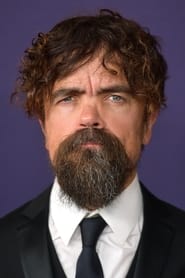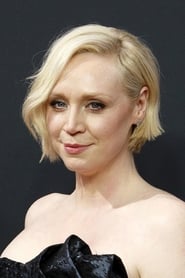
Ask Your Own Question
What is the plot?
"Game of Thrones: The Last Watch" begins with a behind-the-scenes look at the making of the final season of "Game of Thrones." The documentary opens with a montage of the cast and crew preparing for the monumental task of filming the last episodes. It highlights the scale of the production, showcasing the vast sets, intricate costumes, and the extensive makeup required for the characters, particularly the White Walkers and other supernatural elements.
The narrative then shifts to the emotional toll on the cast and crew as they reflect on their time working on the series. Interviews with key cast members, including Kit Harington (Jon Snow), Emilia Clarke (Daenerys Targaryen), and others, reveal their personal connections to their characters and the story. Kit Harington expresses his feelings of nostalgia and sadness as he prepares to say goodbye to Jon Snow, while Emilia Clarke shares her journey with Daenerys and the challenges of portraying her character's evolution.
As the documentary progresses, it delves into the challenges faced during the filming of the Battle of Winterfell, one of the most ambitious sequences in the series. The crew discusses the logistical difficulties of shooting at night, the use of practical effects versus CGI, and the coordination required to manage a large cast and crew during intense battle scenes. The emotional weight of the battle is emphasized through interviews with the actors, who discuss their fears and hopes for their characters' fates.
The film also highlights the contributions of the crew, particularly the production designers, costume designers, and makeup artists. Viewers are given a glimpse into the painstaking detail that went into creating the world of Westeros, from the icy landscapes of the North to the fiery settings of Dragonstone. The documentary showcases the artistry involved in crafting the iconic looks of characters like Cersei Lannister and Arya Stark.
As the final episodes approach, the documentary captures the atmosphere on set during the last days of filming. There are emotional farewells among the cast, with many expressing their gratitude for the friendships formed over the years. The camaraderie is palpable, and the weight of the series' conclusion hangs heavily in the air. The crew members share their pride in being part of such a groundbreaking show, and the impact it has had on their lives and careers.
The documentary culminates in the final table read of the last episode, where the cast gathers to hear the concluding script for the first time. The reactions are a mix of shock, laughter, and tears as they process the fates of their characters. Kit Harington's emotional response to Jon Snow's ending is particularly poignant, as he grapples with the implications of his character's journey.
In the closing moments, the documentary reflects on the legacy of "Game of Thrones," celebrating its cultural impact and the passionate fanbase it has cultivated. The final scenes show the cast and crew celebrating the end of an era, with a sense of accomplishment and bittersweet farewell as they look back on their time in Westeros. The documentary ends with a montage of memorable moments from the series, leaving viewers with a sense of closure and nostalgia for the world of "Game of Thrones."
What is the ending?
In the ending of "Game of Thrones: The Last Watch," the documentary captures the behind-the-scenes journey of the cast and crew during the final season of "Game of Thrones." It highlights the emotional farewells of the actors as they reflect on their characters and the impact of the series. The documentary concludes with a sense of nostalgia and closure, showcasing the dedication and hard work that went into creating the epic saga.
As the documentary begins, it opens with a montage of the final season's production, emphasizing the scale and complexity of the sets, costumes, and special effects. The crew members are shown working tirelessly, often in harsh conditions, to bring the world of Westeros to life. The camera pans over the vast landscapes of Northern Ireland, where much of the filming took place, capturing the beauty and ruggedness of the terrain.
Scene transitions to interviews with key cast members, including Kit Harington (Jon Snow), Emilia Clarke (Daenerys Targaryen), and others, as they share their thoughts on the end of the series. Harington expresses a mix of pride and sadness, reflecting on Jon Snow's journey and the weight of his character's decisions. Clarke discusses the evolution of Daenerys and the challenges of portraying such a complex character.
The documentary then shifts to the production of the Battle of Winterfell, showcasing the intense preparation and choreography involved in creating the epic fight scenes. The crew discusses the logistical challenges of filming at night and the emotional stakes for the characters involved. The tension is palpable as they recount the long hours and the physical demands placed on the actors.
As the final episodes are filmed, the cast members share their emotional farewells. Harington is seen saying goodbye to his co-stars, visibly moved by the end of an era. Clarke reflects on her time as Daenerys, expressing gratitude for the opportunity to portray such a powerful character. The camaraderie among the cast is evident, with moments of laughter and tears as they reminisce about their experiences.
The documentary culminates in the final wrap party, where the cast and crew celebrate their achievements. There are heartfelt speeches, and the atmosphere is filled with a sense of accomplishment and bittersweet nostalgia. The camera captures the joy and sadness of the moment, as everyone acknowledges the end of a significant chapter in their lives.
In the closing scenes, the documentary emphasizes the legacy of "Game of Thrones," showcasing fan reactions and the cultural impact of the series. The final shots are a montage of iconic moments from the show, leaving viewers with a sense of closure and reflection on the journey of the characters and the story as a whole. The documentary ends with a poignant reminder of the dedication and passion that brought the world of Westeros to life, celebrating the artistry behind the beloved series.
Is there a post-credit scene?
"Game of Thrones: The Last Watch" does not contain a post-credit scene. The documentary focuses on the behind-the-scenes aspects of the final season of "Game of Thrones," showcasing the efforts of the cast and crew, the challenges they faced, and the emotional farewells as the series concluded. It provides an in-depth look at the production, the artistry involved in creating the series, and the personal reflections of those who contributed to its legacy. The documentary ends without any additional scenes or content after the credits.
What challenges did the cast and crew face during the production of the final season?
The cast and crew faced numerous challenges during the production of the final season, including extreme weather conditions, particularly during the filming of the Battle of Winterfell, where temperatures dropped significantly. The night shoots were particularly grueling, as the crew had to work in near-freezing conditions for long hours. Additionally, the complexity of the battle scenes required extensive coordination among the cast, stunt performers, and special effects teams, leading to a demanding shooting schedule.
How did the actors prepare for their roles in the final season?
The actors underwent various preparations for their roles in the final season, including physical training to handle the intense fight scenes and emotional preparation to portray the weight of their characters' arcs. For instance, Emilia Clarke (Daenerys Targaryen) worked on her dragon-riding scenes, while Kit Harington (Jon Snow) focused on the emotional turmoil his character faced. The actors also engaged in discussions with the writers and directors to fully understand their characters' motivations and the stakes involved in the final season.
What was the significance of the Night King's defeat in the series?
The Night King's defeat marked a pivotal moment in the series, symbolizing the end of an existential threat to humanity. It was a culmination of the long-standing conflict between the living and the dead, showcasing the sacrifices made by characters like Theon Greyjoy and Arya Stark. Arya's unexpected role in the Night King's demise highlighted themes of destiny and the unpredictability of heroism, as she emerged as a key player in a battle that many believed would end in tragedy.
How did the production design contribute to the atmosphere of the final season?
The production design played a crucial role in establishing the atmosphere of the final season, with elaborate sets and detailed costumes that reflected the dire circumstances faced by the characters. The stark contrast between the icy landscapes of Winterfell and the fiery scenes in King's Landing emphasized the escalating conflict. The use of practical effects, such as the massive sets built for the Battle of Winterfell, added a tangible realism that heightened the emotional stakes for the audience.
What were the reactions of the cast to the series finale?
The reactions of the cast to the series finale were mixed, with many expressing a sense of bittersweet closure. Some actors, like Maisie Williams (Arya Stark), shared their emotional responses to the end of their characters' journeys, reflecting on the friendships formed over the years. Others, like Kit Harington, acknowledged the weight of the finale and the impact it would have on fans. The cast's reflections highlighted their deep connection to the story and the characters they portrayed, as well as their hopes for how the audience would receive the conclusion.
Is this family friendly?
"Game of Thrones: The Last Watch" is a documentary that delves into the making of the final season of "Game of Thrones." While it provides an insightful look behind the scenes, it does contain several elements that may be objectionable or upsetting for children or sensitive viewers.
-
Graphic Content: The documentary includes discussions and footage related to the violent and graphic nature of the show, including battles and character deaths, which may be distressing.
-
Emotional Strain: There are moments that capture the emotional toll on the cast and crew, including stress and anxiety related to the production, which may be heavy for younger viewers.
-
Language: The documentary features strong language from cast and crew members, which may not be suitable for all audiences.
-
Themes of Loss: The exploration of character arcs and the impact of their deaths can evoke feelings of sadness and loss, which might be upsetting for some viewers.
-
Behind-the-Scenes Realities: The documentary reveals the challenges and hardships faced by the crew, including long hours and physical demands, which may be intense for sensitive viewers.
Overall, while it is a fascinating look at the series, the content may not be appropriate for all children or sensitive individuals.
























